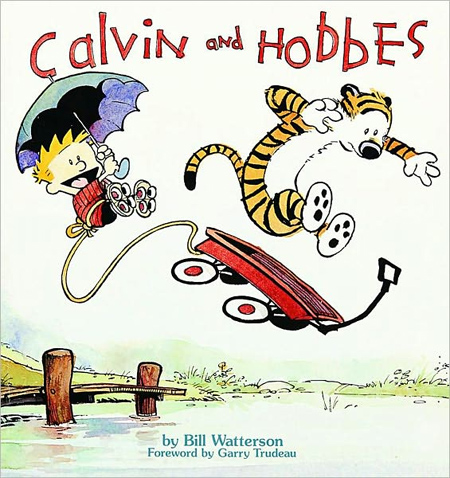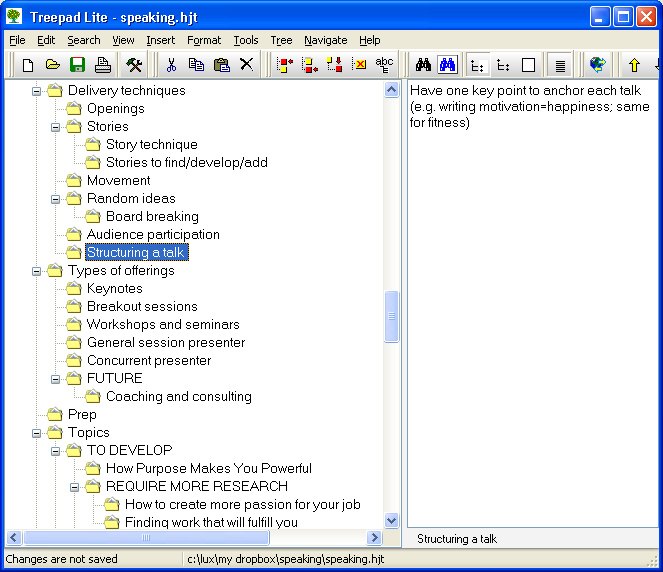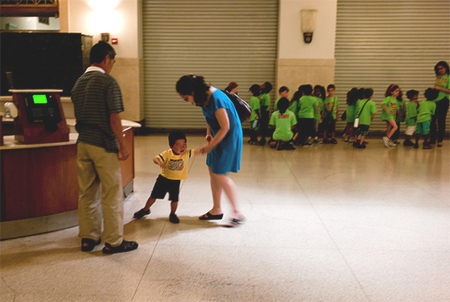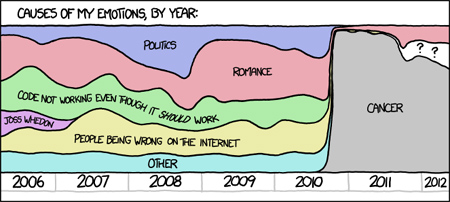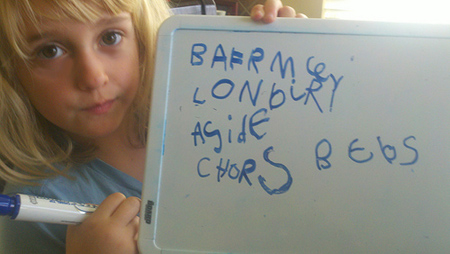 It’s funny, but I haven’t been able to find a post on the Web about the most difficult pluralizations in English. Maybe I’m just not looking hard enough. Regardless, I decided it was easier to put together my own than to keep looking; here it is.
It’s funny, but I haven’t been able to find a post on the Web about the most difficult pluralizations in English. Maybe I’m just not looking hard enough. Regardless, I decided it was easier to put together my own than to keep looking; here it is.
The thing about plurals is that you start running into a lot of trouble about “common usage” versus “correct usage” and whatnot. I’ll say right here that I think that language is defined by usage. At the same time, I hold the completely contradictory belief that sometimes lots and lots of people are making the same mistake. It’s not a tenable position, but I’m holding it anyway. It seems to work for me.
Even if you’re not in love with the English language, as I and many of my writer friends, are, I can think of three reasons to care about getting plurals right. The first is pretty minor, and it’s clarity: expressing yourself in a way that’s precise and unlikely to lead to confusion.
The second is attention to detail, because people who feel very attached to “proper” language may tend to judge your speaking, writing, and/or general intelligence ungenerously if they don’t like your plurals.
The third is steering clear of something that’s for some people is a pet peeve, as a compassionate and charitable act. Good plurals are good karma (or at least less likely to get you dragged into tedious conversations about “octopi” and “octopodes”)!
With those initial notes, let’s dive right into the plurals and plural-related expressions. Where possible, I’ve listed each by the singular followed by a colon and then the plural. Here we go!
dwarf: dwarfs or dwarves
“Dwarfs” used to be preferred, but J.R.R. Tolkien, author of The Hobbit and The Lord of the Rings used “dwarves,” and that has since become the most popular plural. You’re probably safer with Tolkien’s version, because who can gainsay Tolkien on the topic of dwarves? Still, if you like the retro feel, “dwarfs” is perfectly acceptable.
roof: roofs
Australians and people from long ago have been known to use “rooves,” but most contemporary English-speakers (at least in the northern hemisphere) will look at you funny or shout you down if you use that, so “roofs” is the best way to go unless you like to rile people, in which case feel free to drive some people through their rooves.
Kennedy: Kennedys
It’s the same for other names and places. You’d think it might be “Kennedies,” but proper nouns aren’t subjected to the -Y to- IES rule, I guess because it’s considered rude to muck with someone’s name. It definitely isn’t “Kennedy’s”: see the next section.
Never, ever pluralize with an apostrophe–except when it’s OK
So you’ve probably seen signs on stores saying “Sale on shoe’s!” and “Sorry, we’re out of apple fritter’s.” These are simply and pitiably wrong. People have a tendency to throw in an apostrophe when they’re not used to pluralizing something, for instance saying “The only government that would do more of this would be one led entirely by Barack Obama’s.” This is wrong, wrong, wrong.
However, you can get away with pluralizing numbers and letters with an apostrophe (at least using some style manuals). For instance, you can write “I got all A’s and B’s” or “My scores have all been 3’s.” You can also write “As and Bs” and “3s”, though. I think the reason the apostrophe was allowed there is that the letters, at least, look like they’re trying to form words when you leave it out. Anyway, it’s your choice.
octopus: There is no good answer
The plural of “octopus” you’re most likely to get away with is “octopuses,” because it’s a standard English pluralization and is widely used.
However, “octopi” is also widely considered acceptable. Unfortunately, some people will insist it’s the only correct one (because in Latin words that end in “-US” are pluralized with an “-I” ending), while other people will insist it’s horribly wrong (because “octopus” comes from Greek, not Latin!), while yet other people will point out that even if it’s wrong, “octopi” has been in use for centuries, so it doesn’t matter whether it was invented for good reason or not: it’s part of the English language, and that’s that.
At a certain point people tried to correct “octopi” by substituting a more Greek-like plural, making it “octopodes.” This variant seems to be more popular in the United Kingdom and/or when talking about different species of octopus.
My recommendation? Stick to one octopus at a time and save yourself the heartache.
platypus: platypuses
“Platypus,” like “octopus,” is from the Greek, but there’s been a lot less arguing about this particular plural, and “platypuses” is a pretty safe bet.
nucleus: nuclei or nucleuses
syllabus: syllabi or syllabuses
focus: foci or focuses
These are regular old Latin plurals. Of course, most of us don’t speak Latin, so it helps to memorize them. Alternatively, the Anglicized “-es” forms are also acceptable (and sometimes, as with “focuses,” are sometimes preferred).
Worried about the pronunciation of “foci”? Don’t be. People pronounce it “FOE-kee,” “FOE-kai,” “FOE-see,” or “FOE-sai.” Just pick your favorite!
datum: data
medium: media
I’m afraid this is one I actually care about, because I’ve dealt with a lot of data in my time. One piece of information is a “datum,” while a bunch of pieces of information are “data.” So technically, saying “The data is wrong about this” is a little off. However, in common usage for at least a few decades, people have been using “data” as a collective noun (like “faculty”), because who cares about just one piece of information in an age that practically drowns us in information? Therefore most people will have no trouble with you saying “the data is wrong,” but a few of us will gnash our teeth, tear our hair, rend our garments, wail, etc.
“Medium” is in a similiar situation. Newspapers are one medium, while DVDs are another. Both are types of media. However, “media” is also sometimes used as a collective noun, like “data.”
criterion: criteria
This one actually has a right answer, and let common usage be hanged. One thing to take into account is a “criterion” (singular). If you have to take a lot of things into account, they’re “criteria” (plural). Please don’t say “This is the single most important criteria.”
Pretty please?
schema: schemas or schemata
Both “schemas” and “schemata” are used as plurals for “schema,” although in Schema Therapy, the plural is “schemas” only.
mother-in-law: mothers-in-law
sergeant major: sergeants major
court-martial: courts-martial
attorney general: attorneys general
Nouns made up of multiple words, like these examples, get the first word pluralized, partly because sometimes the words on the end are adjectives, and pluralizing an adjective just doesn’t make sense–except in Spanish or Russian or one of those other crazy languages that they speak in far-flung parts.
Proudfoot: Proudfeet
Another Tolkien reference. If it doesn’t amuse you, please disregard it and move on.
tornado: tornados or tornadoes
Either one is fine.
however
potato: potatoes
Enough said.
appendix: appendixes or appendices
“Appendixes” seems to be the best choice when we’re talking about the parts of the body, while “appendices” tends to be preferred when we’re talking about the information at the end of a book.
you: y’all: all y’all
I can’t think of many instances where a plural has a plural (unless you want to get into collective nouns, for instance “flocks of geese”), but this is one. In the American South, “you” is often pluralized “y’all,” although “you,” “you all,” and “you guys” are also used depending on the place and the person. Further, in all seriousness, if you’re talking to a large group, you can double-pluralize it and get “all y’all.” The difference seems to be a small group versus a large group. For instance: “Y’all want to go to the movies with me?” versus “All y’all at this movie theater [pronounce it thee-AY-tur] are too dang loud!”
After attending college in Florida for a couple of years, I came back to the North (also known as Them Yankees Up There) still using “y’all” because it was so useful. I gradually stopped, though, because I got tired of people looking at me funny over it. All y’all should stop doin’ that.
(By the way, I recognize that Florida doesn’t really count as part of the South, but there is a fair measure of y’alling going on down there.)
basis: bases
thesis: theses
parenthesis: parentheses
crisis: crises
All of these words ultimately come from Greek, in which (it would seem–I don’t speak Greek), “-IS” words are pluralized with “-ES.” More memorization fun for everyone! The nice thing about knowing the plurals about these is that you come across as extra-well-educated if you use them in grammatical crises.
species: species
Why? I have no idea. Sheep. Moose. Fish. Species.
cactus: cactuses or cacti
They’re both perfectly acceptable, and let no one tell you different. “Cactus” is a Latin word (although it comes from the Greek “kaktos”), so the Latin plural makes about as much sense as the English plural.
there’s trees in the forest (no, there aren’t!)
It’s common for people to use “there’s” when talking about multiple things, but this is technically wrong, because “there’s” is short for “there is” (don’t tell me it can also mean “there has,” because that’s not what we’re talking about here!).
Did I miss any important ones (not including academic and scientific terms)? Please add in the comments if you have ’em.
A heartfelt thank-you to many writer friends who contributed ideas and facts for me to obfuscate and misconstrue here, including: Alter S. Reiss, Anatoly Belilovsky, Brian Dolton, David Steffen, Gareth D Jones, Gary Cuba, Grayson Bray Morris, J. Kathleen Cheney, Laurel Amberdine, Matt Rotundo, Melissa Mead, Patty Jansen, Rick Novy, Ronald D Ferguson, S. Boyd Taylor, Sylvia Spruck Wrigley, and Vylar Kaftan. Also to my sister, editor Su Reid-St.John, who made several improvements by catching goofs in my text before this was posted.
Photo by MacQ
Like this:
Like Loading...



